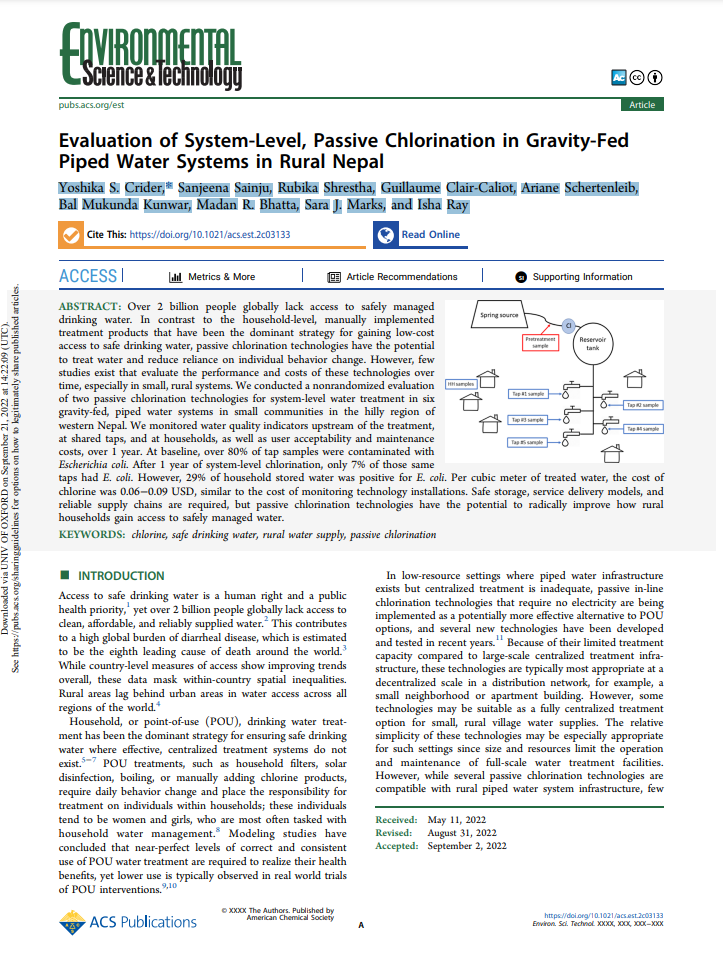Authors: Yoshika S. Crider, Sanjeena Sainju, Rubika Shrestha, Guillaume Clair-Caliot, Ariane Schertenleib, Bal Mukunda Kunwar, Madan R. Bhatta, Sara J. Marks, and Isha Ray
Over 2 billion people globally lack access to safely managed drinking water. In contrast to the household-level, manually implemented treatment products that have been the dominant strategy for gaining low-cost access to safe drinking water, passive chlorination technologies have the potential to treat water and reduce reliance on individual behavior change. However, few studies exist that evaluate the performance and costs of these technologies over time, especially in small, rural systems. We conducted a nonrandomized evaluation of two passive chlorination technologies for system-level water treatment in six gravity-fed, piped water systems in small communities in the hilly region of western Nepal. We monitored water quality indicators upstream of the treatment, at shared taps, and at households, as well as user acceptability and maintenance costs, over 1 year. At baseline, over 80% of tap samples were contaminated with Escherichia coli. After 1 year of system-level chlorination, only 7% of those same taps had E. coli. However, 29% of household stored water was positive for E. coli. Per cubic meter of treated water, the cost of chlorine was 0.06–0.09 USD, similar to the cost of monitoring technology installations. Safe storage, service delivery models, and reliable supply chains are required, but passive chlorination technologies have the potential to radically improve how rural households gain access to safely managed water.

